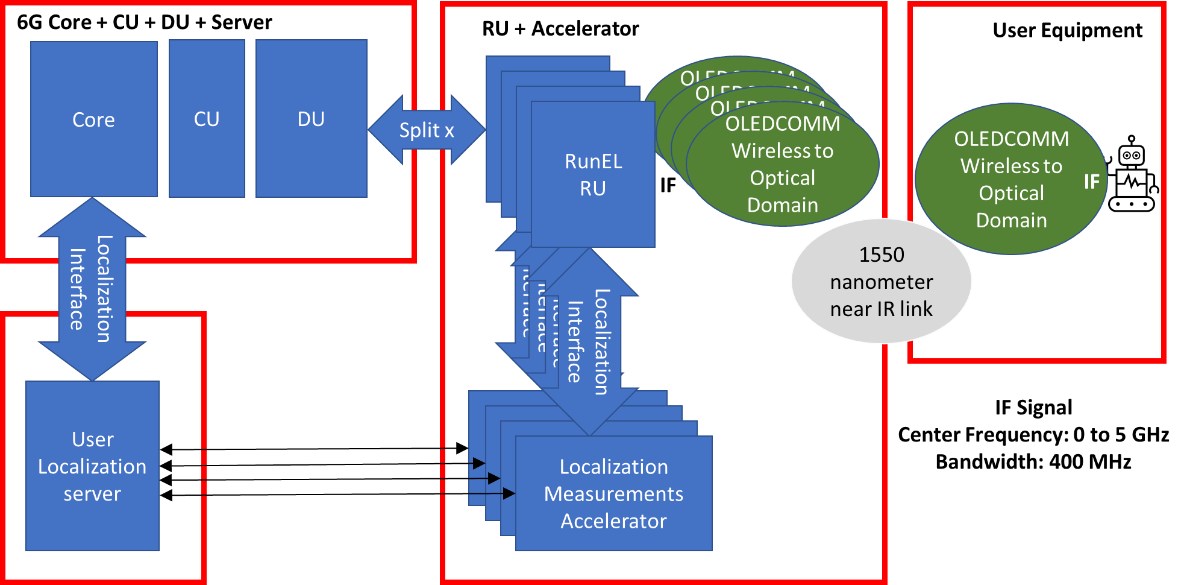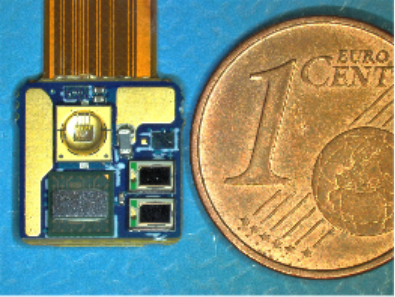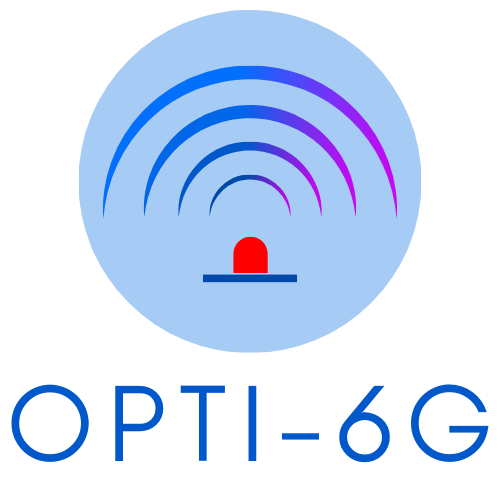Overview
The OPTI-6G project provides a broadband optical wireless 6G communications (OWC) vertical cavity surface emitting laser (VCSEL) array solution, shown in Figure 2, that operates in the near Infrared (IR) 1550 nm wavelength that does not suffer from interference because of the propagation characteristics of EM waves in this part of the spectrum and provides universal broadband coverage within buildings from a cell-free network of OWC access points that are pervasively located within buildings. This broadband system, shown in Figure 1, will provide 1 Gbps data rates for distances up to 5 m over a field of emission of 25° and 3 Gbps with an angle of 15° and paves the way towards a beam-steered OWC system that will ultimately produce much wider access angles.
The system will be supplemented with a sub cm location measurement and sensing solution, whose accuracy has already been proven at 3.5 GHz. The performance of near IR OWC solution will be compared with the alternative 3.5 GHz 5G radio solution.
Architecture, Technologies and Innovation

Figure 1: Optical 6G communication and location sensing network
The challenge that is addressed by OPTI-6G project is to design low cost, cell-free near IR networks that can be configured to implement multi-connectivity thereby improving link quality and resilience, whilst obviating the need for building owners to subdivide their non-public mobile in-building network into cellular areas, and the need to access licensed spectrum since the system operates at the optical unlicensed bands and its AI based distributed scheduler manages any interference between inside and outside access. The novelty of using VCSEL arrays is that such a solution is more resilient to interference from natural visible light emissions providing a truly robust solution.

Figure 2: Current optical antenna used in cell-based LiFi systems
It has been shown by OPTI-6G project partners in the preceding 6G BRAINS project that user equipment terminals can be located with a few cm accuracies using Time Difference of Arrival (TDoA) by analysing OFDM Pseudorandom Noise (PN) sequence in a 5G sub 6 GHz carrier frequency localisation system. Currently, existing OWC localisation solutions that use Received Signal Strength (RSS) alone do not achieve better location accuracy than 1–3 cm, which is not sufficient for automated guided vehicles (AGVs), extended reality (XR) Headsets, drones, IoT devices and robotic use cases, so this will be enhanced by combining it with Angle of Arrival (AoA) and/or TDoA to explore whether a higher accuracy can be obtained. The benefits of these localisation technologies at near IR OWC will be compared with an existing 3.5 GHz localisation solution.



